- Home
- Paul Doherty
Isabella and the Strange Death of Edward II
Isabella and the Strange Death of Edward II Read online
PAUL DOHERTY is the internationally renowned author of many novels and works of history. He studied history at Liverpool and Oxford universities, and gained his doctorate from Oxford. He is now headmaster of a London school and lives near Epping Forest.
Praise for Isabella and the Strange Death of Edward II
‘[An] exemplary account that demonstrates a deep engagement with the sources and a refreshing directness of narrative style.’
Prof. Mark Ormrod, BBC History Magazine
‘[A] compassionate and personal account of Edward II’s Queen . . . That this was a genuine affair of the heart is well displayed by Doherty.’
Alex Burghart, Times Literary Supplement
‘A gripping if somewhat gory tale . . . A fascinating mystery story . . . An exploration of a neglected aspect of medieval history.’
Royalty Digest
By the same author
The Mysterious Death of Tutankhamun
The Gates of Hell
The Godless Man
The House of Death
ISABELLA
AND THE STRANGE DEATH OF
EDWARD II
Paul Doherty
ROBINSON
London
Constable & Robinson Ltd.
55–56 Russell Square
London WC1B 4HP
www.constablerobinson.com
First published in the UK by Constable
an imprint of Constable & Robinson Ltd 2003
This paperback edition published by Robinson,
an imprint of Constable & Robinson Ltd 2004
Copyright © Paul Doherty 2003
The right of Paul Doherty to be identified as the author of this work has been asserted by him in accordance with the Copyright, Designs and Patents Act, 1988
All rights reserved. This book is sold subject to the condition that it shall not, by way of trade or otherwise, be lent, re-sold, hired out or otherwise circulated in any form of binding or cover other than that in which it is published and without a similar condition including this condition being imposed on the subsequent purchaser
A copy of the British Library Cataloguing in
Publication Data is available from the British Library
ISBN 1-84119-843-9 (pbk)
ISBN 1-84119-301-1 (hbk)
eISBN: 978-1-47211-240-8
Printed and bound in the EU
10 9 8 7 6 5 4 3 2
Cover painting: Queen Isabella with her ladies and with her troops at Hereford
Contents
Prologue: England under Edward I
1 A Fitting Marriage . . .
2 Isabella and the King’s Favourite
3 The New Favourite and Isabella’s Disgrace
4 The She-Wolf Triumphant
5 The Burial of a King
6 The Downfall of the She-Wolf
7 The Immortal King
8 The King is Dead, Long Live the King
Notes
Bibliography
Index
To Carla, my wife,
with all my love
PROLOGUE
England under Edward I
Oh day of wrath, oh day of mourning!
See fulfilled Heaven’s warning.
Heaven and Earth in ashes burning!
See what fear man’s bosom rendeth,
When from Heaven the judge descendeth,
On whose sentence all dependeth.
Dies irae, the opening words of the medieval hymn-writer, Thomas de Celano, chill the soul and concentrate the mind, not only on an individual death but the end of all things. Such verses characterize the most significant difference between medieval and modern consciousness. We regarded the millennium as something to look forward to, an exciting time of change. The medieval mind viewed ‘The Millennium’ as that moment in history when the sky would melt, the earth would catch fire, the sun darken, the moon turn to blood and the stars fall from heaven. The very fabric of creation would be ripped apart to reveal Christ coming in judgement at the end of the world. Thus in 1300, people were ever-conscious of the imminent dissolution of all things, when the human and divine would finally merge.
To the medieval mind these two realities co-existed: the Visible – the fabric of life – and the Invisible. The two were not totally distinct but intermingled. The fourteenth century developed such an attitude even further, manifesting itself not only in the glorious cathedrals of Salisbury and Gloucester but in the constant pilgrimages to Becket’s tomb at Canterbury and the Virgin’s statue at Walsingham, whilst for braver souls there were always the attraction of St James Compostella, St Peter’s in Rome or, the greatest prize of all, Jerusalem.
The people of the fourteenth century were only too aware of the spiritual realities which framed their everyday existence. They were highly sensitive to the powers of darkness, to the air being peopled with demons, to Lucifer, the Fallen Angel, wandering God’s creation, ‘roaring like a lion seeking whom it may devour’. At the same time they were acutely conscious of the powers of light: of Christ and ‘His sweet Mother’, of ministering angels and mediating saints. Every village church had its altar and those that were large enough, their Lady Chapel, statues, shrines, and exuberant wall paintings which depicted the truth of man’s spiritual destiny. Chaucer’s Canterbury Tales reflects these realities perfectly, describing a pilgrimage to Becket’s shrine, which included the good, the noble, the bad and the indifferent of fourteenth-century England. Chaucer’s poetry exudes a spring-time freshness as well as the energy and bustle of his era with all its idiosyncrasies, strengths and failings, virtues and vices.
The fourteenth century can be described as the high point of the Middle Ages and yet it also contained within it the very seeds of its own destruction. Nowhere is this more apparent than in the lives and careers of the ‘Anointed Ones’ of Westminster, who did so much to shape and influence the lives of their subjects. In 1300, England was ruled by Edward I (1272–1307), the greatest of the Plantaganet line, a born warrior, statesman and general. Edward I could be viewed as either a visionary or a fanatic. He dreamed of uniting England, Wales, Ireland and Scotland under one rule from Westminster: the beginning of the notion of ‘Empire’ which, even today, England still struggles to break free from. Edward I had no such doubts. He wanted his writ to run as far north as the Highlands of Scotland, across Wales to the western coast of Ireland: his England would be replicated and extended. Edward’s barons, or great Earls, would lead his armies of mailed, mounted knights, leather-garbed footmen and archers, to subjugate all opposition. Castles would be built and narrow-laned towns, with their market places, churches and plaster-and-wood houses, founded to promote commerce. Harbours and ports would be developed to receive his warships and merchantmen, those sturdy, one-masted, fat-bellied cogs on which England so depended for protection and commerce. The power of the English Church, owing an uneasy allegiance to the popes in exile at Avignon, would make itself felt; the primacy of Canterbury would be accepted by all. The great religious orders, the Benedictines, Franciscans and Dominicans, would be encouraged to found monasteries and priories, till the land and remind the people that, if there was one Christ, one Pope, one Church, there was also only one King: the Anointed One, who wore the Confessor’s crown and sat enthroned in splendour at Westminster. Yet many of these dreams soon turned into nightmares; the seeds of hideous war, betrayal and bloodshed were planted deep.
Edward I had a strong sense of Communitas Regni – Community of the Realm. He possessed the wit to realize that his world was changing. Some peasants no longer tilled the land but allowed it to grass over to graze sheep whose wool was avidly sought by the merch
ants of the Low Countries, that collection of warring states on France’s northern border, Hainault, Brabant and Flanders.
This newly found wealth led to the rapid expansion of cities such as York, Bristol and, above all, London. A city, dominated by the Tower, London comprised a cramped acreage of narrow streets, jostling houses and countless churches. A busy, prosperous place, the centre of royal government and its system of law and order, London was proving to be one of the leading cities of western Europe. It housed the emerging Inns of Court and, above all, the great departments of state: the Exchequer, or treasury, where sheriffs from the shires would have to deliver their accounts four times a year; and the Chancery, or great ‘Writing Office’, where clerks, trained at the universities of Oxford and Cambridge, ran the civil service. The city was also the hub of royal justice with its Courts of King’s Bench and Common Pleas held in Westminster Hall. London of the early fourteenth century represented the growing wealth and complexity of English society and housed the guilds and fraternities, like those of Corpus Christi in Bread Street, the Grocers of Soper Lane or the Brewers at All Hallows near London Wall.
The powerful burgesses and merchants of London and other commercial centres had used their newly found wealth to build churches, market places, stately mansions and warehouses as well as to promote their own interests. They had formed guilds, powerful trading organizations, and had sent their sons to cathedral schools and on to the Halls of Oxford or Cambridge. Afterwards they would follow a career in the Church or the expanding civil service, which supported the Crown and its policies, both at home and abroad. These burgesses advanced the interests of their own cities, particularly London, and demanded a say in national government. Politics, they argued, was too important to be left to the King and his great Council of nobles and bishops.
England was thus a thriving melting-pot of many conflicting worlds: the great lords, the merchants, the ever-busy civic burgesses, the prosperous peasants and, of course, the poor, who were always with them. Two mighty organizations cut across this energetic, jostling society. First was the Crown – the all-powerful King, surrounded by his lawyers and councillors. Even here change had begun. The King swore a great oath to rule justly and, in return, received the obedience of his subjects. This basic pledge of mutual solidarity had been put under scrutiny by lawyers, who had evolved a philosophy of interdependence. The King was there to rule but he must do so wisely. He must take the advice of his Council, which must include the Great Lords of the Soil. Others, like the lawyer Bracton, developed this even further, proclaiming ‘Quod omnes tangit ab omnibus approbetur’ – ‘What affects all must be approved by all’.
Edward I had implemented this theory in a more practical way for his own uses by summoning his Parliaments, where he could meet the community of the realm to discuss matters of mutual interest, be it finance, military defence, war or law. Naturally, the different stratas of such a hierarchical society did not intermingle. The Lords met together in one session, representatives of the Commons assembled in another. The latter were evolving a system of ‘redress before supply’: the King needed their consent to levy effective taxes; they, in turn, could respond by submitting petitions for royal redress, or at least an answer, to their general or particular grievances. It was a finely balanced system. On the one hand, the King could act the autocrat, but on the other he had to be aware of the advice and opinion of other sections of the community he ruled.
Edward I of England was the embodiment of such a balance: king and warrior, Edward had developed ‘Parliaments’ to aid good government, not necessarily realizing that the system he patronized might one day limit his own power. He used Parliament not only to gain the consensus of the community but also to enact statute law which had the full consent of that community.
The second organization which cut across and dominated all aspects of medieval society was the Church. Aristotle called man a political animal; the fourteenth century Church defined him as religious. Every human being, it preached, had an eternal destiny and the Church was there to ensure this destiny was fulfilled. The Catholic Church was a power to be reckoned with. It stretched across borders, it proclaimed a philosophy completely free of national aspirations. The power of the Pope, the Bishop of Rome, was all-pervasive and each kingdom, England included, had to respond to this power. The English Church was part of an international organization. Its leaders, the Archbishops of Canterbury and York, the bishops in their different dioceses, all had to acquire papal approval before they could assume office. In turn, these bishops ruled large sprawling dioceses where the Church was represented in towns and villages by a vicar, priest or religious. The local manifestation of the Church’s power was the parish chapel and the organization which grew up around it.
Of course there were tensions. The Catholic Church was an international power but national aspirations did surface. The popes had to fight a continuing battle with the kings of England over the control of the national Church and the comprehensive social message it preached. Edward I, and his son Edward II, were both drawn into this conflict as they strove to keep united, under their own personal rule, the disparate, and often conflicting, sectional interests of their kingdom.
Edward I strove for uniformity and union and had the personality and strength of character to carry this through. He launched a devastating war on Wales to bring the principality under the direct rule of the English Crown and to establish his borders on the edge of the Irish Sea. The Welsh princes, including the principal chieftain, Llewellyn, were caught and executed, their tribes crushed and a string of powerful castles, controlled by Marcher (or border) barons such as the de Spencers and Mortimers, would keep the country in subjection.
Edward now turned to Scotland where conflicting rival claims to the crown allowed him to intervene, first as the ‘honest broker’ and then as the powerful prince and conquering king. In 1286, King Alexander III of Scotland had taken a mortal fall whilst riding through a storm to visit his new queen. His only heir was his granddaughter Margaret, whose father was the King of Norway. Edward immediately suggested that his son, Edward II, and the Maid of Norway be betrothed and marry. He got his way but in October 1290, the young girl, en route to Scotland, died on board ship and her corpse was taken back to Bergen. The death of the Maid of Norway thus dragged the English Crown into a savage, bloody war with Scotland. Edward supported a number of claimants to the Scottish throne but his long-term goal was the annexation of that kingdom and its absorption under the English Crown, just as he had achieved in Wales.
In the end Scotland proved a hard nut to crack. A group of astute war leaders, William Wallace, Archbishop Wishart of Glasgow and finally Robert the Bruce, reduced the Plantaganet’s ambitions to nothing. The recent film Braveheart vividly describes the bloody savagery of Edward’s war in Scotland: in that sense the film is accurate. Scotland was turned into a battlefield, its cities burnt, and its nobles became partisan fighters hiding out in the woods and glens.
Edward’s vision remained quite simple: one king ruling over a united realm, whose writ could run in Cornwall, London, North Wales, Dublin or Edinburgh. Naturally such a drive for centralization provoked its own reaction. Wales was conquered but Scotland rejected Edward’s vision and fought for its own. Edward was a medieval king, aware of his own fiefdom which, in his view, not only included England, Scotland, Ireland and Wales but also the Duchy of Gascony, that great prosperous wine-growing area centred around the town of Bordeaux in south-west France. Gascony was vital to English interests, not only as a relic of the great Angevin empire of Henry II, but also because of the increasing profits from its rich fertile vineyards.
In France, however, the same beliefs held sway: the Capetian Philip IV, through his council of ministers and different ‘Parlements’, also tried to impose his autocratic vision of what his kingdom should be. Naturally, two such strong kings clashed over every aspect of influence: the Church, international status and, above all, the English duchy of Gascony. Philip
IV dreamed of bringing that prosperous area of south-west France under the direct control of the Capets. At the same time, Philip and Edward had to pay public lip-service to the idea of an international lasting peace brokered by the papacy. Their rivalry, coupled with the desire to be seen as acting as one, led to the idea of an alliance by blood between the two most powerful ruling houses of Europe. The marriage of Princess Isabella, daughter of Philip IV, and Prince Edward I’s son, originated from these conflicting ideals. It is hardly surprising that this much-vaunted marriage, far from resolving conflict, only exacerbated it, both in their respective kingdoms and beyond.
ONE
A Fitting Marriage . . .
‘. . . We ask you to send our beloved son in Christ, your son Edward, Prince of Wales with an appropriate retinue of Prelates and Magnates and prudent men . . . for contracting the marriage treaty between himself and the daughter of the aforesaid King of France . . .’
Clement V to Edward I, 25 August 1305
Isabella was a fairy-tale princess. The chroniclers attest to her loveliness, to her beautiful blonde hair, which she inherited from her father, Philip Le Bel, and her slightly arabic features from her mother Johanna of Navarre. We have no accurate pictorial representation of Isabella; however, her face and striking features are faithfully represented by a carved statue which decorates John of Eltham’s tomb, her second son, in Westminster Abbey.1
Isabella was born in 1296, the only surviving daughter of Philip IV, nicknamed ‘The Beautiful’, of France. She was twelve when she married Edward II and left her father’s court. Little evidence remains about her early life, only a few fragments concerning grants to the princess and her dependants, but scarcely enough to build a coherent picture of her life at the French court, be it the Louvre Palace or the other royal residences in and around the Île de France. She was the youngest of Philip and Johanna’s four children and, like her three brothers, Louis, Philip and Charles, Isabella was used as a powerful political pawn by her father in extending his own influence both in France and across Europe.2

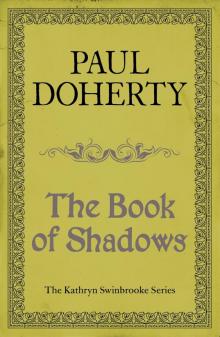 Book of Shadows
Book of Shadows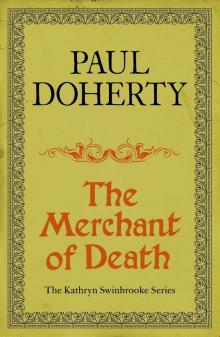 The Merchant of Death
The Merchant of Death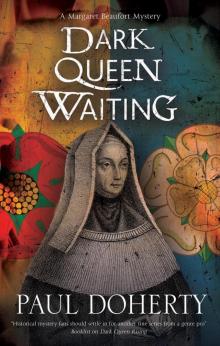 Dark Queen Waiting
Dark Queen Waiting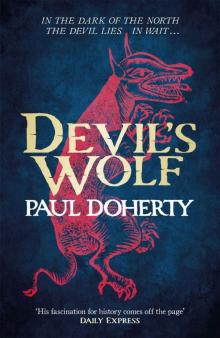 Devil's Wolf
Devil's Wolf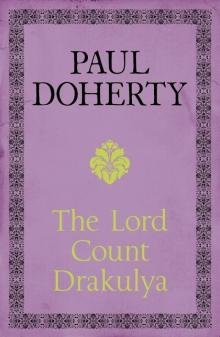 The Lord Count Drakulya
The Lord Count Drakulya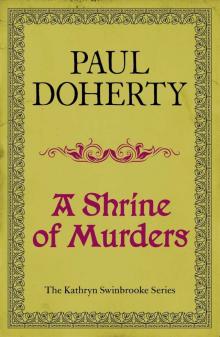 A Shrine of Murders
A Shrine of Murders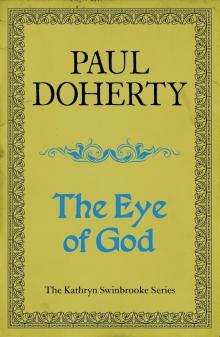 The Eye of God
The Eye of God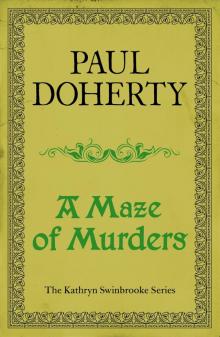 A Maze of Murders
A Maze of Murders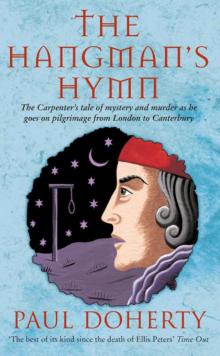 The Hangman's Hymn
The Hangman's Hymn The Godless
The Godless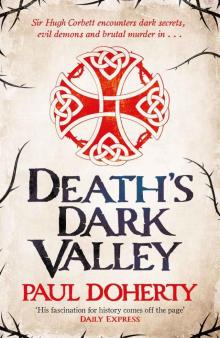 Death's Dark Valley
Death's Dark Valley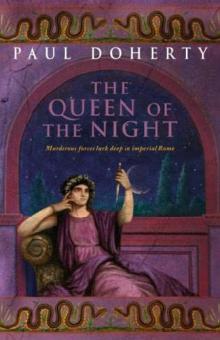 Queen of the Night ar-4
Queen of the Night ar-4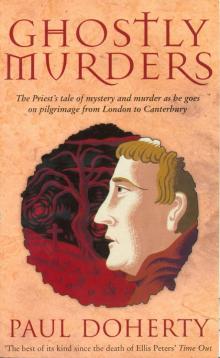 Ghostly Murders
Ghostly Murders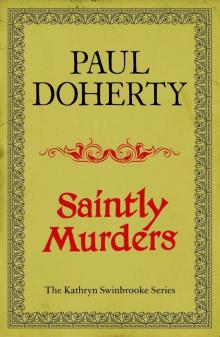 Saintly Murders
Saintly Murders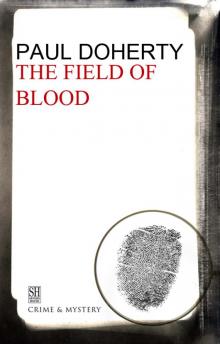 The Field of Blood
The Field of Blood Hugh Corbett 10 - The Devil's Hunt
Hugh Corbett 10 - The Devil's Hunt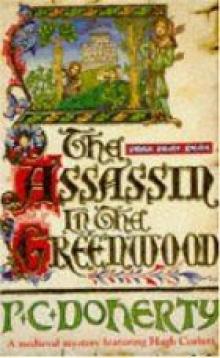 Assassin in the Greenwood hc-7
Assassin in the Greenwood hc-7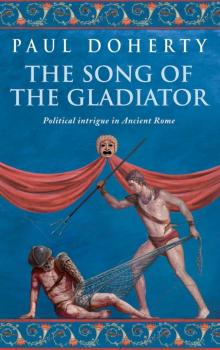 The Song of the Gladiator
The Song of the Gladiator Hugh Corbett 17 - The Mysterium
Hugh Corbett 17 - The Mysterium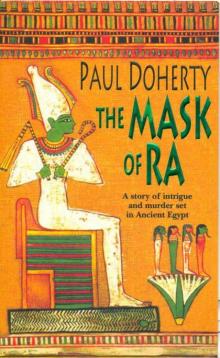 The Mask of Ra
The Mask of Ra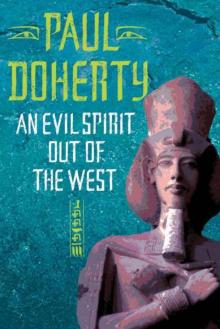 An Evil Spirit Out of the West (Ancient Egyptian Mysteries)
An Evil Spirit Out of the West (Ancient Egyptian Mysteries) Herald of Hell
Herald of Hell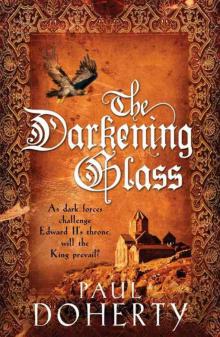 Mathild 03 - The Darkening Glass
Mathild 03 - The Darkening Glass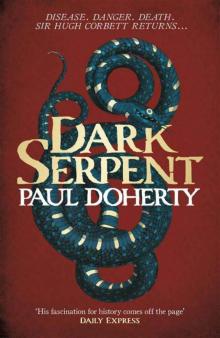 Dark Serpent (Hugh Corbett 18)
Dark Serpent (Hugh Corbett 18)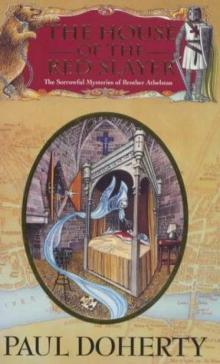 House of the Red Slayer smoba-2
House of the Red Slayer smoba-2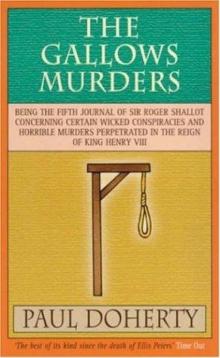 The Gallows Murders
The Gallows Murders The Straw Men
The Straw Men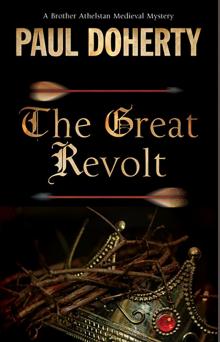 The Great Revolt
The Great Revolt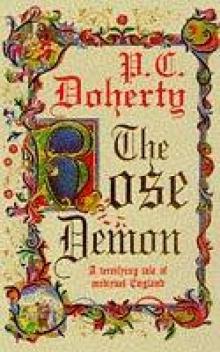 The Rose Demon
The Rose Demon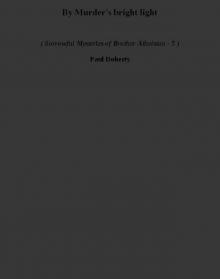 By Murder's bright light smoba-5
By Murder's bright light smoba-5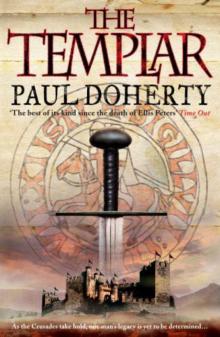 Templar
Templar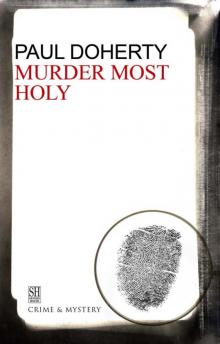 Murder Most Holy
Murder Most Holy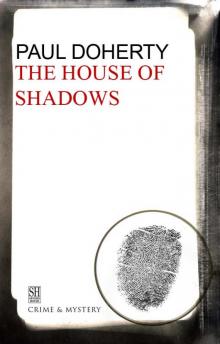 The House of Shadows
The House of Shadows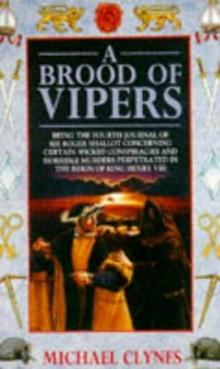 A Brood of Vipers srs-4
A Brood of Vipers srs-4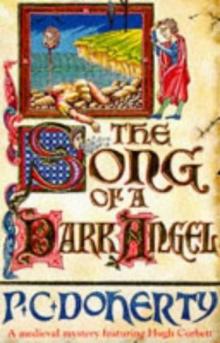 Song of a Dark Angel hc-8
Song of a Dark Angel hc-8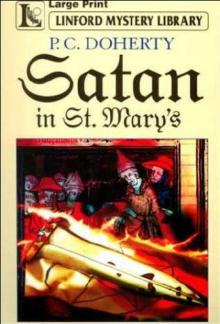 Satan in St Mary hc-1
Satan in St Mary hc-1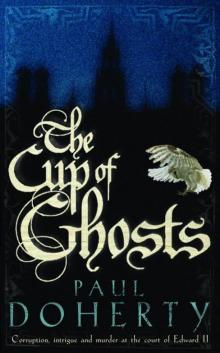 Mathilde 01 - The Cup of Ghosts
Mathilde 01 - The Cup of Ghosts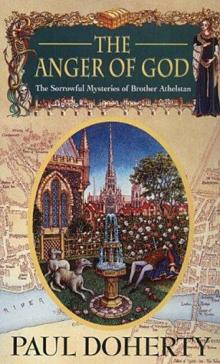 The Anger of God smoba-4
The Anger of God smoba-4 Isabella and the Strange Death of Edward II
Isabella and the Strange Death of Edward II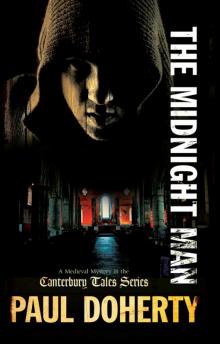 The Midnight Man ctomam-7
The Midnight Man ctomam-7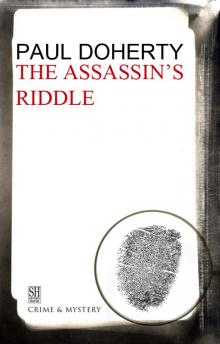 The Assassin's Riddle
The Assassin's Riddle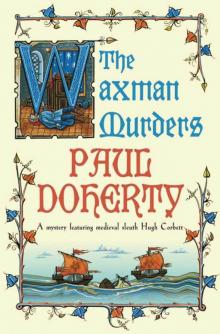 Hugh Corbett 15 - The Waxman Murders
Hugh Corbett 15 - The Waxman Murders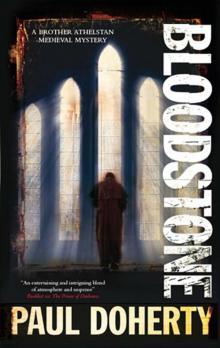 Bloodstone smoba-11
Bloodstone smoba-11 Bloodstone
Bloodstone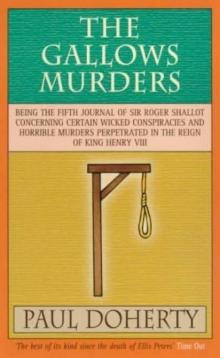 The Gallows Murders srs-5
The Gallows Murders srs-5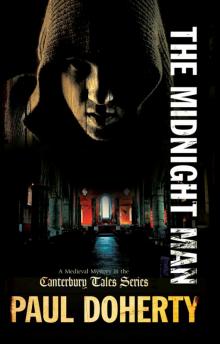 The Midnight Man
The Midnight Man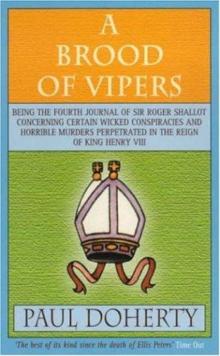 A Brood of Vipers
A Brood of Vipers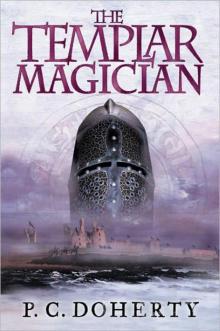 The Templar Magician
The Templar Magician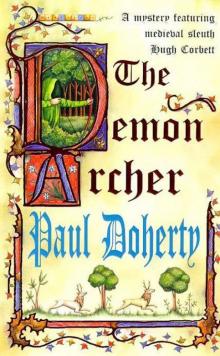 Hugh Corbett 11 - The Demon Archer
Hugh Corbett 11 - The Demon Archer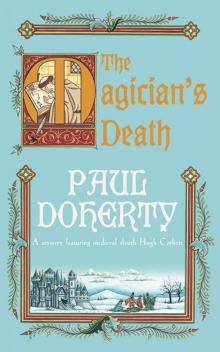 Hugh Corbett 14 - The Magician's Death
Hugh Corbett 14 - The Magician's Death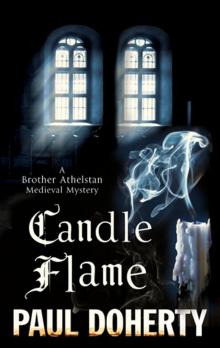 Candle Flame
Candle Flame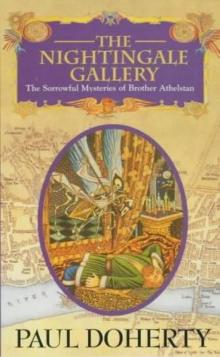 The Nightingale Gallery smoba-1
The Nightingale Gallery smoba-1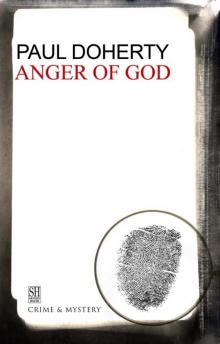 The Anger of God
The Anger of God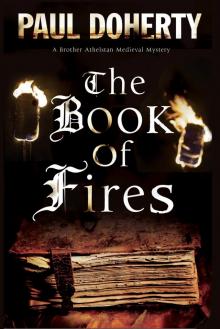 The Book of Fires
The Book of Fires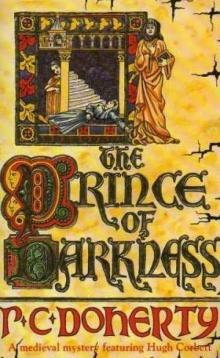 Prince of Darkness hc-5
Prince of Darkness hc-5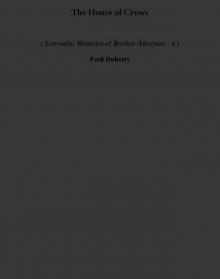 The House of Crows smoba-6
The House of Crows smoba-6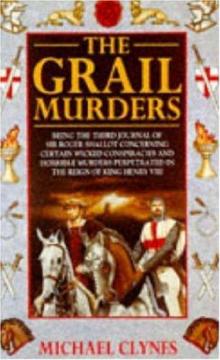 The Grail Murders
The Grail Murders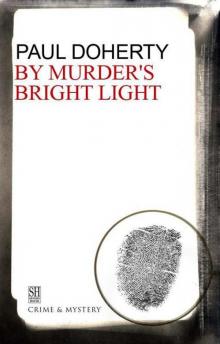 By Murder's Bright Light
By Murder's Bright Light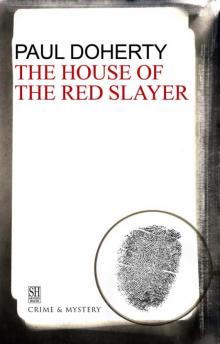 House of the Red Slayer
House of the Red Slayer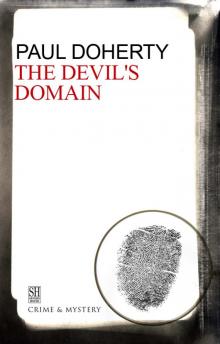 The Devil's Domain
The Devil's Domain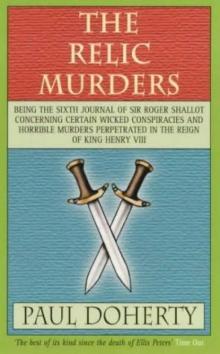 The Relic Murders srs-6
The Relic Murders srs-6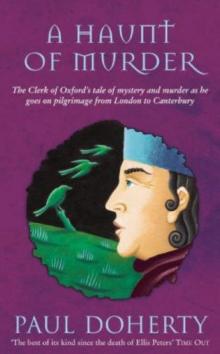 A haunt of murder ctomam-6
A haunt of murder ctomam-6 The Straw Men smoba-12
The Straw Men smoba-12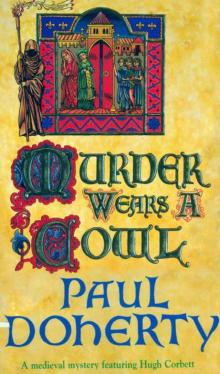 Hugh Corbett 06 - Murder Wears a Cowl
Hugh Corbett 06 - Murder Wears a Cowl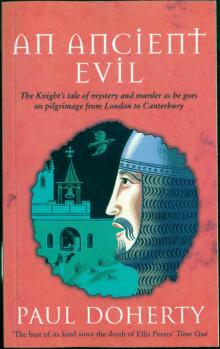 An Ancient Evil (Canterbury Tales Mysteries)
An Ancient Evil (Canterbury Tales Mysteries)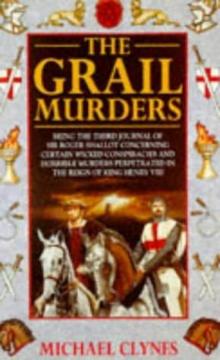 The Grail Murders srs-3
The Grail Murders srs-3 The Fate of Princes
The Fate of Princes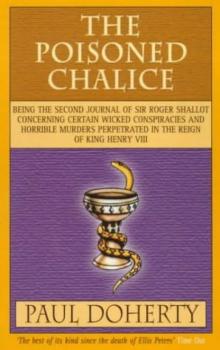 The poisoned chalice srs-2
The poisoned chalice srs-2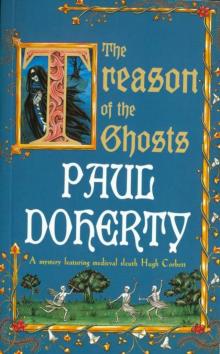 Hugh Corbett 12 - The Treason of the Ghosts
Hugh Corbett 12 - The Treason of the Ghosts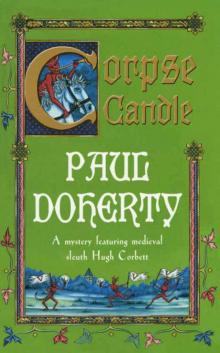 Hugh Corbett 13 - Corpse Candle
Hugh Corbett 13 - Corpse Candle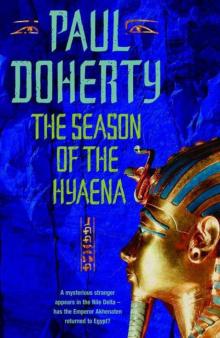 The Season of the Hyaena (Ancient Egyptian Mysteries)
The Season of the Hyaena (Ancient Egyptian Mysteries)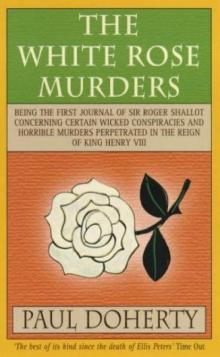 The White Rose murders srs-1
The White Rose murders srs-1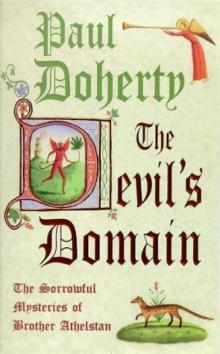 The Devil's domain smoba-8
The Devil's domain smoba-8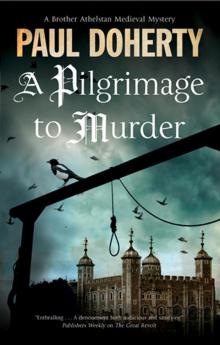 A Pilgrimage to Murder
A Pilgrimage to Murder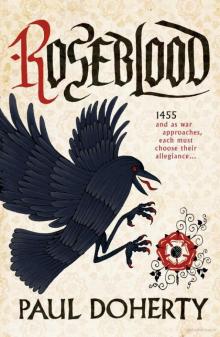 Roseblood
Roseblood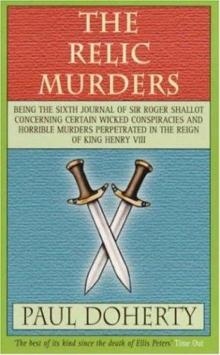 The Relic Murders
The Relic Murders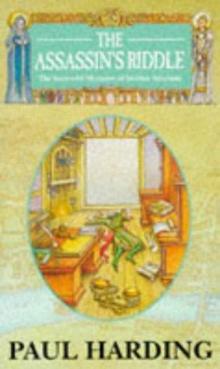 The Assassin's riddle smoba-7
The Assassin's riddle smoba-7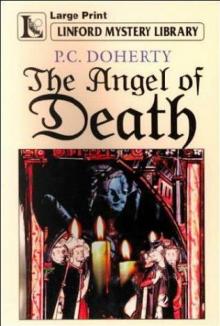 Angel of Death hc-4
Angel of Death hc-4 Dark Queen Rising
Dark Queen Rising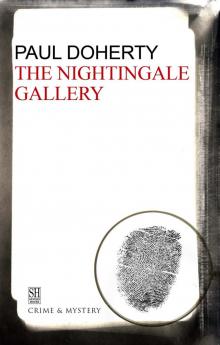 The Nightingale Gallery
The Nightingale Gallery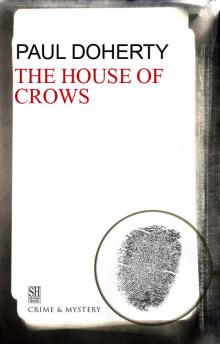 The House of Crows
The House of Crows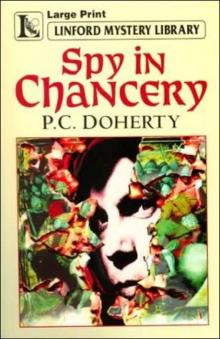 Spy in Chancery hc-3
Spy in Chancery hc-3